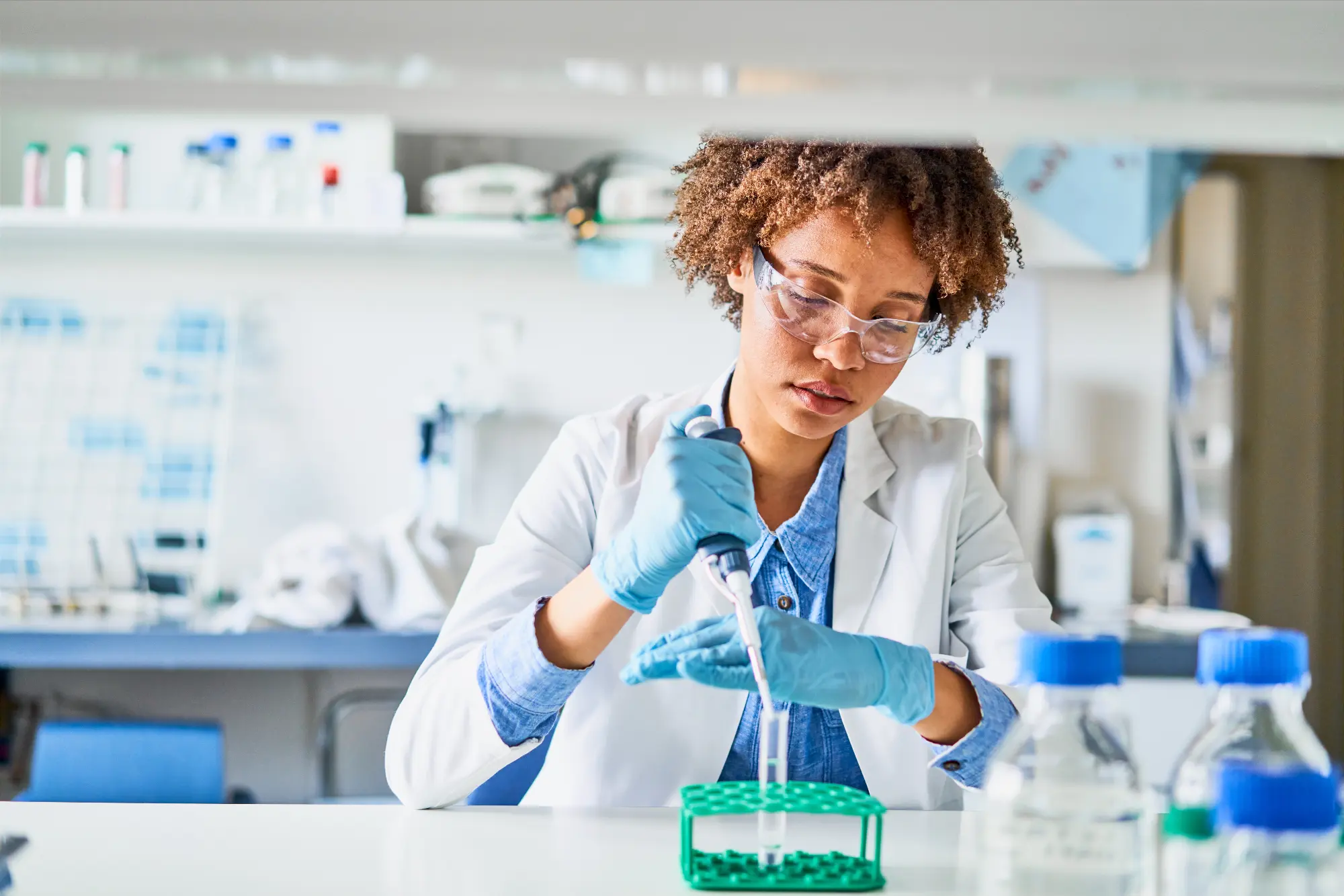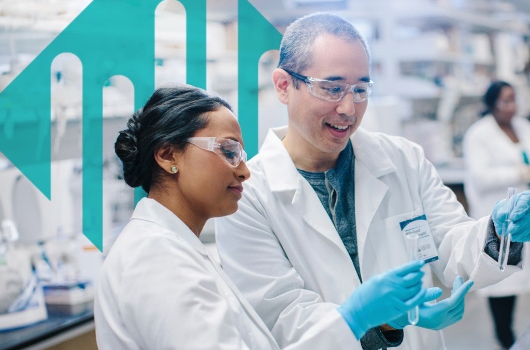Clinical Study
Comparing PCR Testing to Testing Cultures: Speed, Accuracy, Sensitivity, and Range of Pathogen Identification

HealthTrackRx • June 26, 2024
In diagnostics, the evolution of testing methodologies has dramatically enhanced the ability to detect infectious diseases. Two prominent techniques in this field are Polymerase Chain Reaction (PCR) testing and traditional culture methods. Each method has distinct advantages and disadvantages concerning the time it takes to get test results, the test’s accuracy and sensitivity, and the range of pathogens that can be identified. This article will provide a comprehensive comparison between PCR testing and culture-based diagnostics.
Time to Get Test Results
PCR Testing
PCR testing is renowned for its rapid turnaround time. This testing method amplifies the DNA or RNA of pathogens, allowing for the detection of infectious pathogens within hours. Typically, results from a PCR test can be available within 24 hours of sample collection. This rapid diagnostic capability is crucial in clinical settings where timely treatment decisions are invaluable. A great example of this was during the COVID-19 pandemic, where PCR tests enabled patients to get an answer the next day, so that they could safely return to work or travel after a possible exposure.
Testing Cultures
In contrast, traditional culture methods are significantly slower. Culturing involves growing pathogens on various testing surfaces, which can take several days to weeks, depending on the pathogens. For a frame of reference, bacterial cultures generally take 24 to 48 hours, while fungal cultures can take several weeks to yield results. This longer period can delay diagnosis and treatment, potentially worsening patient outcomes, especially in more aggressive infections.
Accuracy of Test Results
PCR Testing
PCR is highly accurate due to its ability to target and amplify specific genetic sequences unique to the pathogen of interest. This specificity reduces the likelihood of false positives because the test detects only the DNA or RNA of the target organism. Additionally, PCR can quantify the amount of pathogen present, providing specific information on the infection’s severity. However, PCR’s accuracy can sometimes be compromised by the presence of inhibitors in the sample that may interfere with the amplification process.
Testing Cultures
While generally reliable, culture methods can sometimes yield false negatives due to the specific growth requirements of certain pathogens. Some bacteria, viruses, or fungi may be slow-growing or require very specific conditions not usually met in culture environments, leading to undetected infections. Another drawback is that cultures are susceptible to contamination, making it hard to identify the target pathogen. Despite these challenges, cultures remain a popular method for diagnosing infections due to their long history and widespread adoption.
Test Sensitivity
PCR Testing
PCR testing is renowned for its high sensitivity. The amplification process allows for the detection of even trace amounts of pathogens, making it possible to identify infections even at very early stages. PCR’s high sensitivity is especially beneficial for detecting pathogens present in low numbers or difficult to culture. For example, PCR can detect viral particles in a patient sample even before symptoms appear, facilitating early intervention and better management of the disease.
Testing Cultures
While culture methods are less sensitive than PCR, they are advantageous in certain contexts. Cultures can grow and identify viable organisms, allowing for subsequent antimicrobial susceptibility testing. This information is critical for guiding appropriate treatment. However, the sensitivity of cultures can be limited by the sample’s quality and the lab’s growth conditions. In cases where pathogens are present in low numbers or difficult to culture, sensitivity can be much lower than PCR.
Range of Pathogen Identification
PCR Testing
One of the biggest advantages of PCR is its ability to identify a broad range of pathogens. PCR assays can simultaneously detect multiple types of organisms in a single test, making it a powerful tool for diagnosing multiple infections. For example, in complex respiratory infections, PCR assays can identify viruses and/or bacteria responsible for infection in a single test. Moreover, PCR can be quickly adapted to detect emerging pathogens, crucial for responding to new infectious disease threats. This tool has been especially useful in the COVID-19 pandemic and Mpox outbreak. However, PCR can only detect pathogens that it is designed to look for.
Testing Cultures
Traditional culture methods are somewhat limited in the range of pathogens they can identify. While cultures can successfully grow and identify many common bacteria, viruses, and fungi, they often fail to detect hard-to-grow or slow-growing organisms. Additionally, cultures typically require different media and conditions for different pathogens, making it a more cumbersome and less versatile method than PCR. Testing a sample for bacteria and fungi typically requires multiple collections. However, given appropriate growth conditions, anything that can grow will be detectable by culture.
Conclusion
Both PCR testing and culture methods play vital roles in diagnostic testing, each with unique strengths and limitations. PCR testing excels in speed, sensitivity, and the ability to identify a wide range of pathogens, making it invaluable for rapid diagnostics and early intervention. On the other hand, despite being slower and less sensitive, culture methods provide crucial information on pathogen viability and antimicrobial susceptibility.
In clinical practice, the choice between PCR and culture methods often depends on the specific clinical scenario, the type of pathogen suspected, and the need for rapid versus detailed diagnostic information. By leveraging the strengths of both techniques, healthcare providers can ensure accurate, timely, and comprehensive diagnostics, ultimately improving patient outcomes and advancing public health.
Related Articles and White papers

HealthTrackRx • June 26, 2024
In diagnostics, the evolution of testing methodologies has dramatically enhanced the ability to detect infectious diseases. Two prominent techniques in this field are Polymerase Chain Reaction (PCR) testing and traditional culture methods. Each method has distinct advantages and disadvantages concerning the time it takes to get test results, the test’s accuracy and sensitivity, and the range of pathogens that can be identified. This article will provide a comprehensive comparison between PCR testing and culture-based diagnostics.
Time to Get Test Results
PCR Testing
PCR testing is renowned for its rapid turnaround time. This testing method amplifies the DNA or RNA of pathogens, allowing for the detection of infectious pathogens within hours. Typically, results from a PCR test can be available within 24 hours of sample collection. This rapid diagnostic capability is crucial in clinical settings where timely treatment decisions are invaluable. A great example of this was during the COVID-19 pandemic, where PCR tests enabled patients to get an answer the next day, so that they could safely return to work or travel after a possible exposure.
Testing Cultures
In contrast, traditional culture methods are significantly slower. Culturing involves growing pathogens on various testing surfaces, which can take several days to weeks, depending on the pathogens. For a frame of reference, bacterial cultures generally take 24 to 48 hours, while fungal cultures can take several weeks to yield results. This longer period can delay diagnosis and treatment, potentially worsening patient outcomes, especially in more aggressive infections.
Accuracy of Test Results
PCR Testing
PCR is highly accurate due to its ability to target and amplify specific genetic sequences unique to the pathogen of interest. This specificity reduces the likelihood of false positives because the test detects only the DNA or RNA of the target organism. Additionally, PCR can quantify the amount of pathogen present, providing specific information on the infection’s severity. However, PCR’s accuracy can sometimes be compromised by the presence of inhibitors in the sample that may interfere with the amplification process.
Testing Cultures
While generally reliable, culture methods can sometimes yield false negatives due to the specific growth requirements of certain pathogens. Some bacteria, viruses, or fungi may be slow-growing or require very specific conditions not usually met in culture environments, leading to undetected infections. Another drawback is that cultures are susceptible to contamination, making it hard to identify the target pathogen. Despite these challenges, cultures remain a popular method for diagnosing infections due to their long history and widespread adoption.
Test Sensitivity
PCR Testing
PCR testing is renowned for its high sensitivity. The amplification process allows for the detection of even trace amounts of pathogens, making it possible to identify infections even at very early stages. PCR’s high sensitivity is especially beneficial for detecting pathogens present in low numbers or difficult to culture. For example, PCR can detect viral particles in a patient sample even before symptoms appear, facilitating early intervention and better management of the disease.
Testing Cultures
While culture methods are less sensitive than PCR, they are advantageous in certain contexts. Cultures can grow and identify viable organisms, allowing for subsequent antimicrobial susceptibility testing. This information is critical for guiding appropriate treatment. However, the sensitivity of cultures can be limited by the sample’s quality and the lab’s growth conditions. In cases where pathogens are present in low numbers or difficult to culture, sensitivity can be much lower than PCR.
Range of Pathogen Identification
PCR Testing
One of the biggest advantages of PCR is its ability to identify a broad range of pathogens. PCR assays can simultaneously detect multiple types of organisms in a single test, making it a powerful tool for diagnosing multiple infections. For example, in complex respiratory infections, PCR assays can identify viruses and/or bacteria responsible for infection in a single test. Moreover, PCR can be quickly adapted to detect emerging pathogens, crucial for responding to new infectious disease threats. This tool has been especially useful in the COVID-19 pandemic and Mpox outbreak. However, PCR can only detect pathogens that it is designed to look for.
Testing Cultures
Traditional culture methods are somewhat limited in the range of pathogens they can identify. While cultures can successfully grow and identify many common bacteria, viruses, and fungi, they often fail to detect hard-to-grow or slow-growing organisms. Additionally, cultures typically require different media and conditions for different pathogens, making it a more cumbersome and less versatile method than PCR. Testing a sample for bacteria and fungi typically requires multiple collections. However, given appropriate growth conditions, anything that can grow will be detectable by culture.
Conclusion
Both PCR testing and culture methods play vital roles in diagnostic testing, each with unique strengths and limitations. PCR testing excels in speed, sensitivity, and the ability to identify a wide range of pathogens, making it invaluable for rapid diagnostics and early intervention. On the other hand, despite being slower and less sensitive, culture methods provide crucial information on pathogen viability and antimicrobial susceptibility.
In clinical practice, the choice between PCR and culture methods often depends on the specific clinical scenario, the type of pathogen suspected, and the need for rapid versus detailed diagnostic information. By leveraging the strengths of both techniques, healthcare providers can ensure accurate, timely, and comprehensive diagnostics, ultimately improving patient outcomes and advancing public health.





